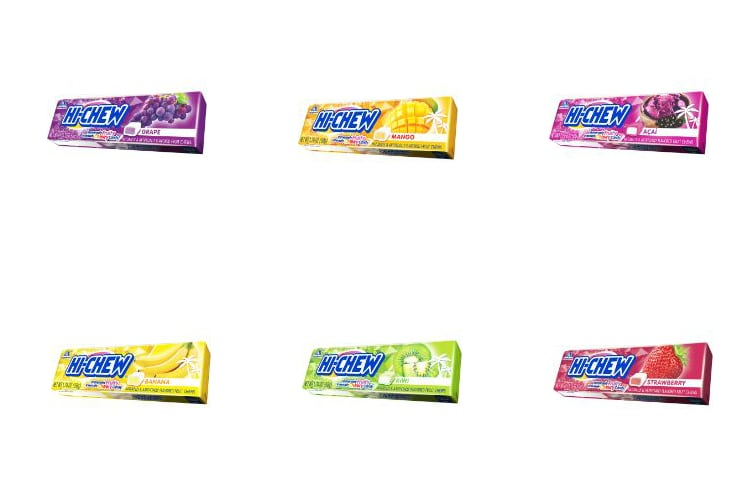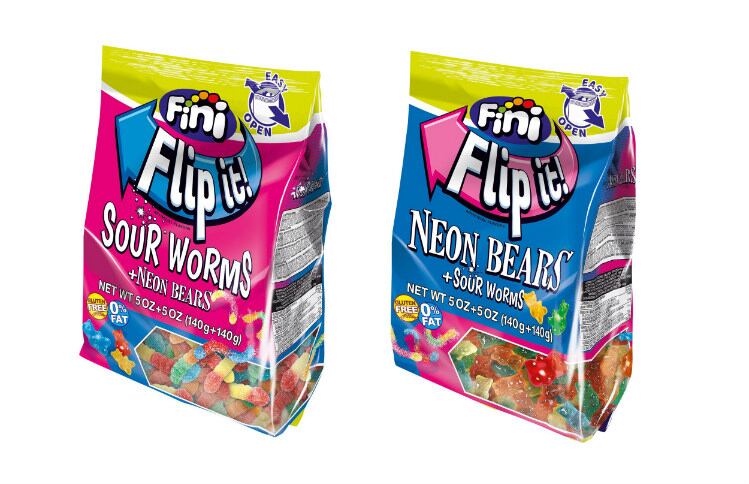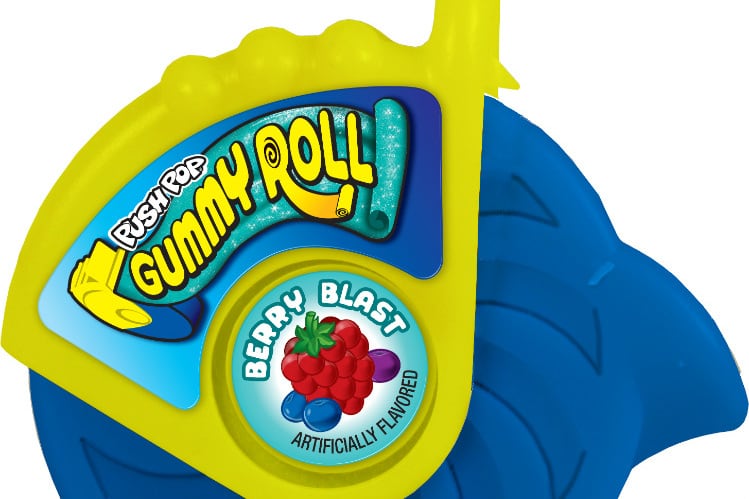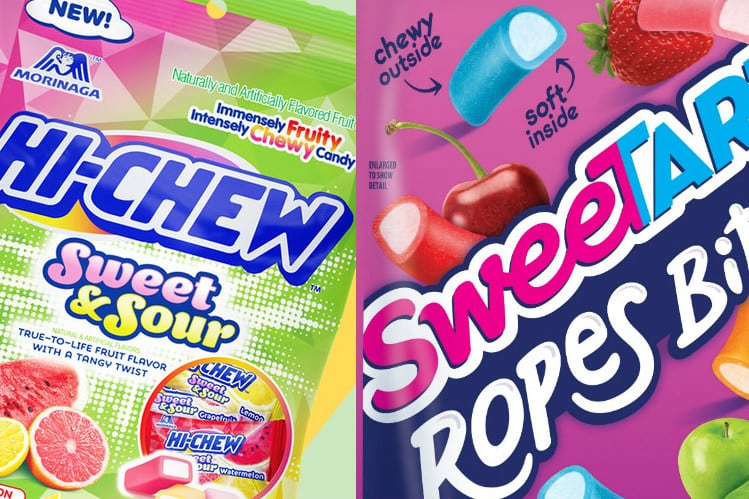Hi-Chew hit its American stride in 2016, when brand marketing manager Kayleigh Westerfield said the brand really took off. Its variety pack – featuring four core flavors of grape, strawberry, mango, and green apple – was a top performer in Kroger’s non-chocolate Halloween set in 2018. Such news would please any emerging candy brand, but Hi-Chew didn’t even offer a Halloween-themed bag.
“It totally crushed it,” Westerfield told us, which in part led 7-Eleven to launch a Superfruit variety pack (Kiwi, Açaí and Dragon Fruit) in February. Walmart started selling this mix in April (RRP $2.39 for a 3.17oz bag). Walgreens and Target have also latched onto the brand, while online sales fill in distribution gaps.
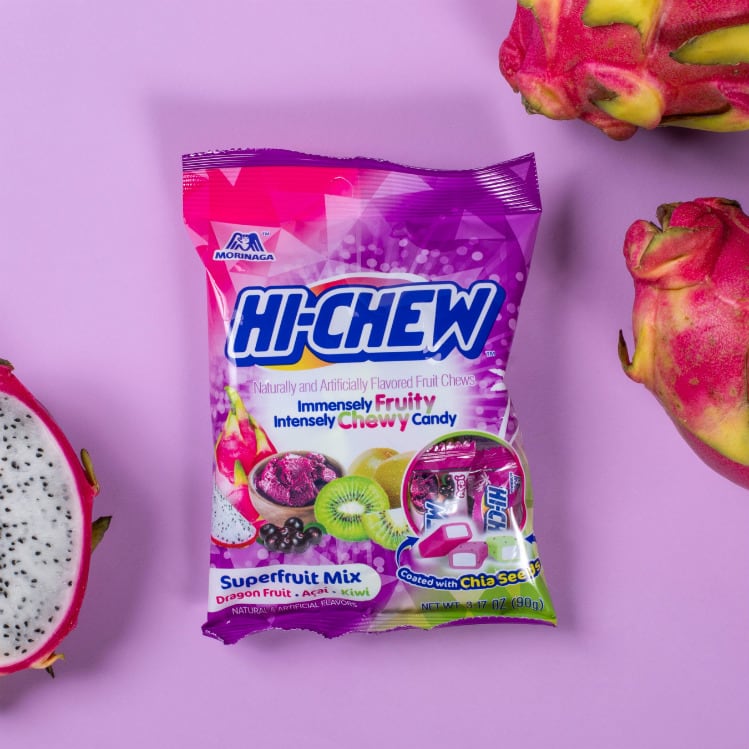
“From a strategy standpoint, an international launch was so critical – basically because of the aging population in Japan. Candy is most commonly consumed by a younger audience. It needs to go outside this market to stay alive.”
Bringing Hi-Chew to America
The company first pursued the Asian import channel, which already knew and trusted Morinaga. Slow-but-steady success in those channels stirred excitement for the brand and opened the door to ethnic aisles of mainstream grocery chains – or, as Westerfield put it, “the opportunity to be in the everyday mix next to Starburst and Skittles.”
“Timing is everything. It’s not necessarily luck, but a lot of strategy. We are riding the wave right now,” she continued, praising the collaborative marketing and sales efforts of its ‘small’ US team. Year-on-year double-digit growth has affirmed this strategy.
In 2015, a combination of higher import taxes and a ‘Made in America’ push compelled Morinaga to open a ‘critical’ US manufacturing facility in North Carolina.
“Once we realized there was a demand for it, we really invested a lot to try to make sure that everything could set us up for success,” said Westerfield. A 2016 national advertising campaign propelled Hi-Chew beyond cult status – though that sentiment still rings true with many diehard fans. (Those folks are known as the Chew Crew.)
From a company goal standpoint, we really value and cherish the Japanese heritage of this brand and we respect it, but we want Americans to accept this as their candy. This is an American-made product, not just some strange ethnic candy that sits in the back corner of the Asian aisle. It can compete with big brands.
-- Kayleigh Westerfield on Hi-Chew's success after 10 years in the US
East meets West in Hi-Chew’s wide-ranging flavor profiles
The brand has approached the US market with respect to the American palate, which differs – in addition to portion size – from Japanese tastes. The original watermelon flavor “is much more natural tasting, where you can almost even taste the rind, whereas Americans are more used to an artificial watermelon taste,” said Westerfield. In both cases, Hi-Chew uses real fruit concentrate “to make sure that we [deliver] on the best flavor possible to mimic the fruit.”
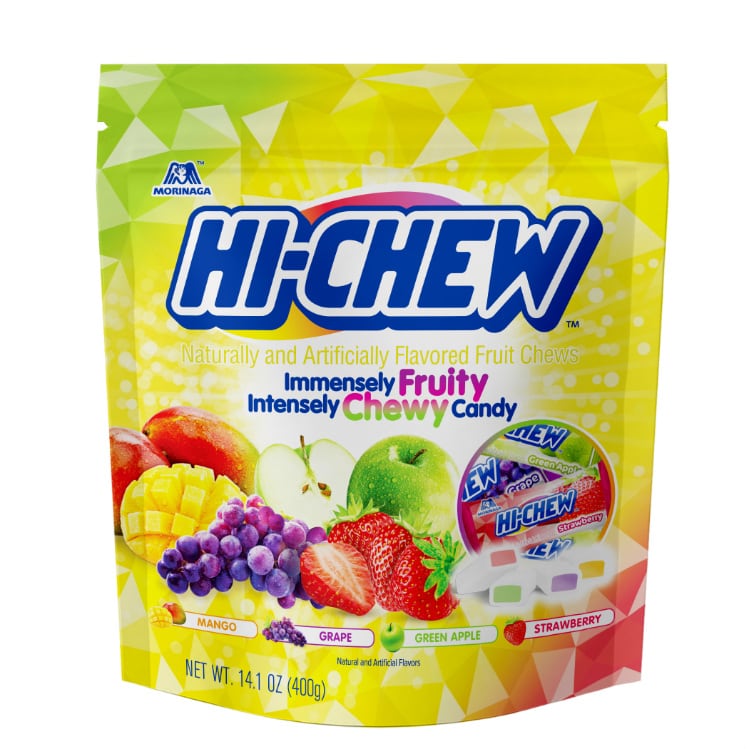
The Japanese line contains more than 200 flavors (down to a regional pear), but the US lineup currently runs a baker’s dozen – from pineapple and grapefruit to mango, banana, grape and kiwi. To connect across the Pacific Ocean, Hi-Chew last year ran an ‘East Meets West’ campaign to determine the 13th addition to the US portfolio.
The winner: Dragon Fruit, a cactus varietal also known as pitaya that is actually indigenous to the Americas but is more often associated with Southeast Asia. The bulbous magenta fruit – with its spiky green tentacles and white flesh speckled with tiny black seeds – grows on the small Japanese island of Okinawa. Americans chose it over other popular Japanese Hi-Chew flavors (Banana Fizz, Strawberry Cheesecake).
“From a trend perspective, we totally hit the nail on the head,” Westerfield told ConfectioneryNews.
The New York Times called the chef favorite ‘a fruit with a future’ in 2011, despite its relatively pear-like flavor profile. A few years later, the wellness movement caught on to its high levels of iron, magnesium and fiber. US sales of the fruit nearly doubled from 2016 to 2019, as retailers learned to merchandise it alongside familiar tropical fruits, such as coconut or mango.
Even Starbucks jumped on the pink-hued trend with the launch of its Dragon Drink coconut milk beverage earlier this year.
Hi-Chew fandom
Asked whether the brand was benefiting from the general rise in non-chocolate confectionery, Westerfield agreed that innovation in the category hasn’t hurt.
The texture and unique fruit flavors of Hi-Chew sets the brand apart from other chewy fruit candies: “It’s that certain kind of surprise and delight elements that make it more real or authentic,” she said, referencing the visible chia seeds in several varieties, plus the “really distinct double layer” and absence of artificial colors.
In Japan, Hi-Chew is nearly synonymous with gummy – much the way the German market refers to any gummy candy as ‘Haribo.’
Morinaga also makes biscuits, chocolate, and frozen desserts. It introduced Hi-Chew in 1975, based on its early 20th century recipe for chewy caramel milk candies. Originally, it was formatted as a kind of chewable gum, Westerfield told us, because removing food from your mouth was considered impolite in Japan.
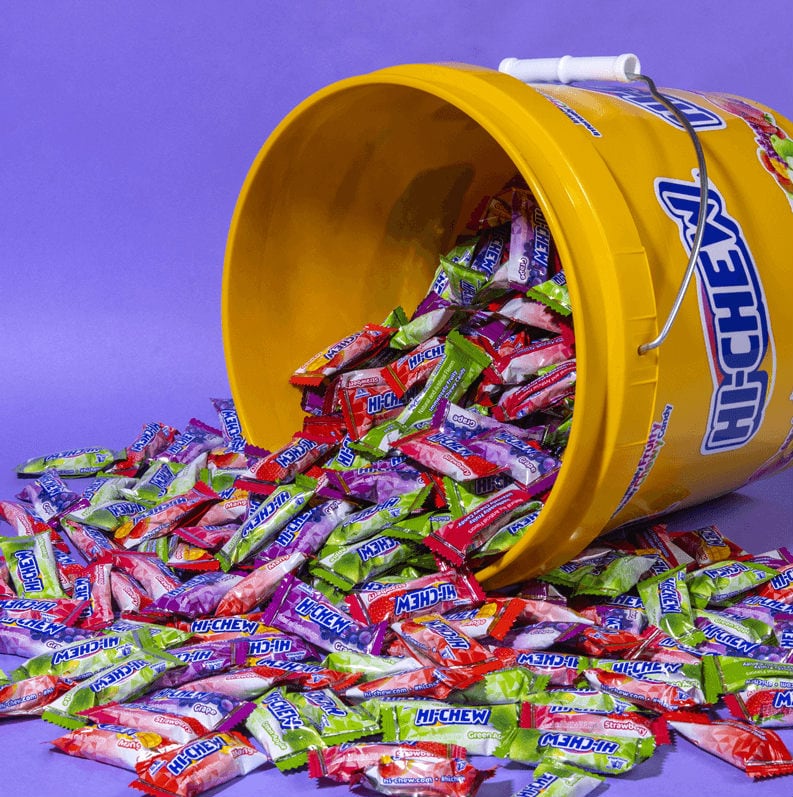
The company’s R&D team set out to create “something that would have that chewy, long-lasting texture but obviously could be swallowed,” she explained. “The texture doesn’t stick to your teeth, and there is no funky aftertaste.”
As for the next 10 years, the Morinaga America will continue to make Hi-Chew a household name.
Right now, brand awareness hovers around 40%, which Westerfield admitted was far below major players such as Mars Wrigley’s Starburst and Skittles or Mondelēz’s Sour Patch Kids.
Partnerships with the Los Angeles Angels and Dodgers, two Major League Baseball teams, have buoyed Hi-Chew into other outlets. Originally released for Halloween, a 17-pound Hi-Chew bucket – boasting a whopping 1,200 pieces (RRP $125.00) – could also garner new fans.
“That’s what cool about this company – there is so much opportunity,” said Westerfield. Regardless of the bucket’s trajectory, Hi-Chew fans are passionate. The challenge will be finding the balance between underground and well-known.
“How do you keep it authentic and real and cool for the people who have known about it forever, but also try to make it mainstream?”
Expect at least one and up to three new US flavors every year – maybe a Georgia peach or Hawaiian pineapple – plus different pack types and mixes.
“The sky’s the limit.”

